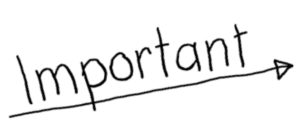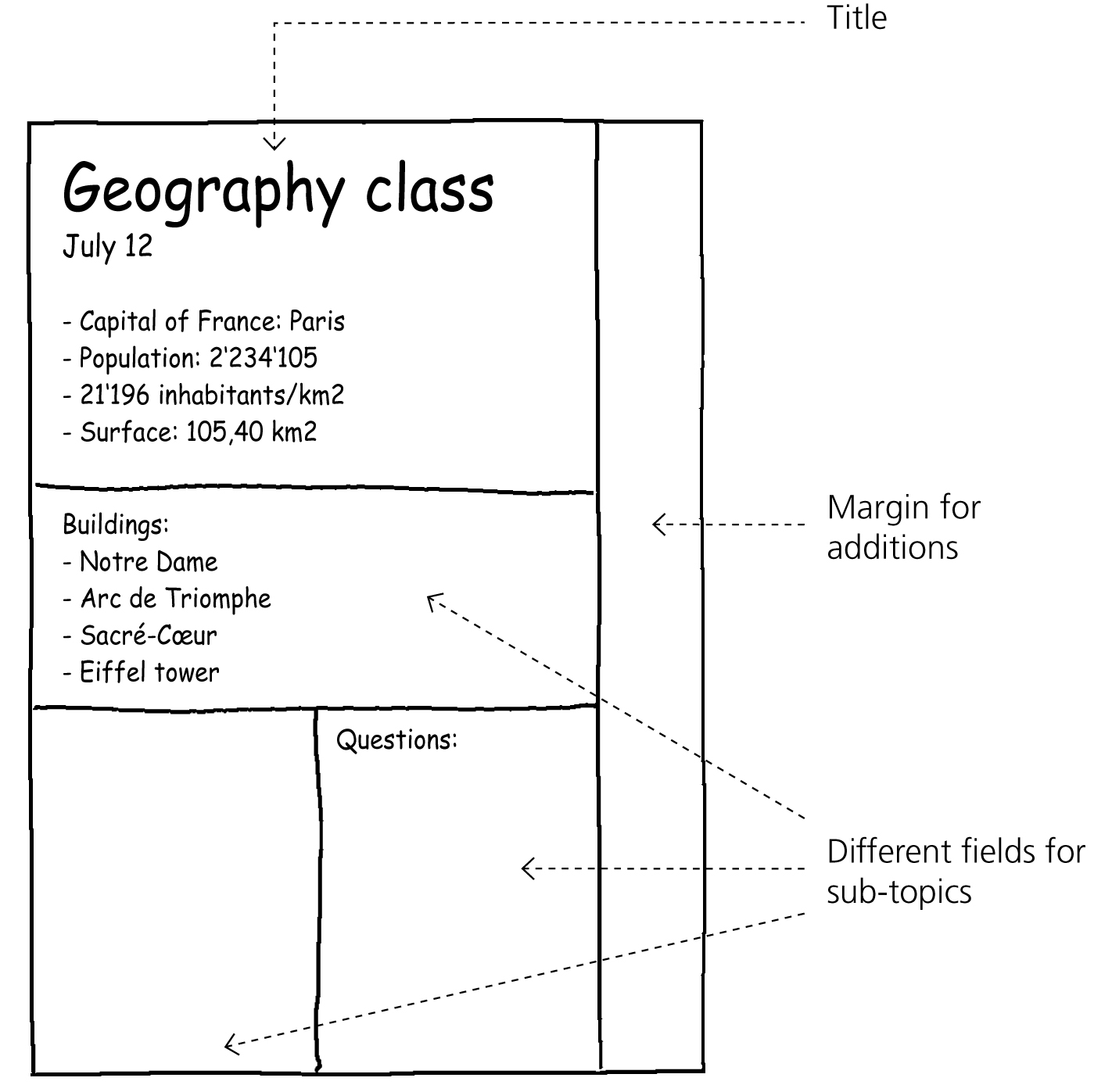9.1
Marking, highlighting, coloring
When you read the content of a text that you should remember (e. g. for a test or a presentation), it is best to mark the most important passages. This has great advantages: when you re-read the text, you don’t have to focus on everything and can limit yourself to the marked up passages.

You can mark the text in various ways – try some of them!
- In books that must not be marked up (particularly borrowed books) it may be useful to lightly underline or draw a small line with a pencil in the margin. Other possibilities: insert bookmarkers to indicate an important passage or use post-it arrows or notes.
- Draw a short line or a cross in the margins: for very important passages draw a double line or an exclamation mark, or a question mark if things are unclear.
- Underline important words or passages, preferably with different colors.
Highlight important words or passages with a marker. If you don’t have a marker, make a circle with a colored pencil. Use various colors for this purpose as well.
9.2
Marginal notes
It is also very useful to write notes in the margins.
- These can be keywords to a passage in the text (almost like subtitles; example: «rivers in Turkey», «racism today»), or
- remarks and questions about the content (example: «unclear», «great quote»).
With books that you cannot mark up, you can proceed as follows: insert book markers, post-it notes or arrows or other pieces of paper, referencing the passage with your commentary.
Clearly, taking notes is important for all sorts of possible reasons: to summarize something, to collect ideas, and to remember something.

9.3
To make your notes really helpful, you should consider a few tips:
- Write legibly, even when time is pressing. Illegible notes will not help you.
- Write a title on top of your page. Leave a margin of 4–5 cm on the right side for comments.
- Write in keywords; don’t write complete sentences.
- Write down only really important details. For training purposes, try to summarize in 10–15 keywords a story or a newspaper article.
Example of a clearly arranged notepad:

- Depending on the theme, it can also be useful if you sub-divide your notes according to different sub-topics. It is best if you divide your note pad into different fields and label them accordingly. Example: «most important contents», «also interesting», «questions», etc..
- Use abbreviations, arrows, symbols, sketches (e. g. “tel.” for ”telephone”; → ; .






